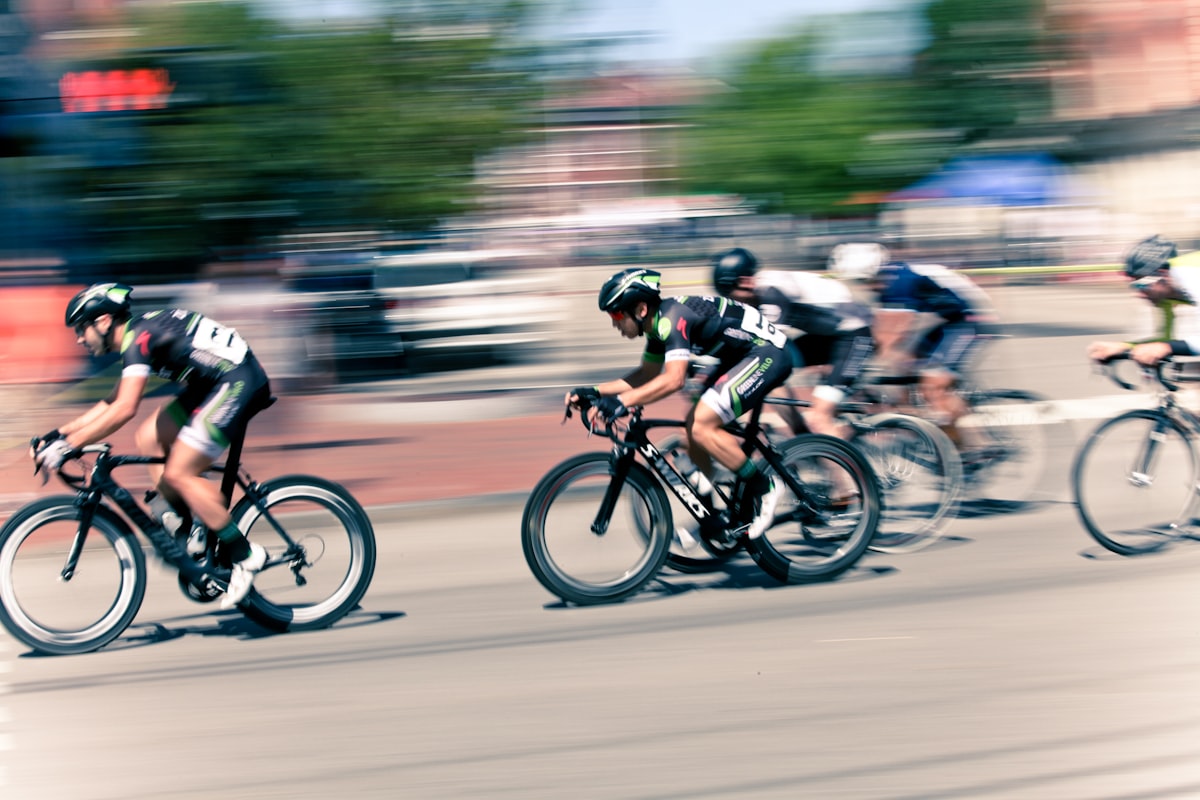First Law of Motion

The first law of motion states that an object at rest will stay at rest, and an object in motion will stay in motion unless acted upon by an outside force. An object either at rest or in motion will stay in its current condition by inertia.
If a man on a bike is going downhill, he is in a state of movement. The only way to stop his bike is to apply a force to it. This force can be applied by using the breaks, which push against the tires, forcing them to stop.
A question you might be asking is "why does a bike stop anyway after some time if you do not push the pedals?" The simple answer to this question is that friction, gravity, air resistance (all forces) also influence the movement of a bike.
The same can be applied in the opposite. To start a bike which is in a state of rest, you must apply force to it. This means that the bike will not move unless you peddle and generate force.
Another force that can be utilized for speed is the force of gravity. This pulls objects downwards. If you are high up on a hill, the gravity of the earth will pull your bike downwards and thus give you speed.




